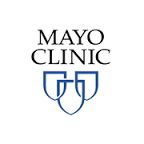AI tool flags surgical site infections from wound photos, boosting safety in outpatient recovery
Editor's Note
Mayo Clinic researchers have developed an artificial intelligence (AI) system that detects surgical site infections (SSIs) from patient-submitted wound photos. According to the July 7 announcement, the model achieved 94% accuracy in detecting surgical incisions and an 81% area under the curve (AUC) in identifying infections.
According to a study published in the Annals of Surgery, the AI pipeline automatically identifies surgical incisions, evaluates photo quality, and flags potential infections—all using images sent through online patient portals. Trained on over 20,000 images from more than 6,000 patients across nine Mayo Clinic hospitals, the system offers a scalable solution for early infection detection after discharge.
As detailed in the article, the technology is particularly suited for outpatient settings where face-to-face follow-up is limited and timely wound evaluation is critical. “We were motivated by the increasing need for outpatient monitoring of surgical incisions in a timely manner,” said co-senior author Cornelius Thiels, DO, a surgical oncologist at Mayo Clinic. He noted that AI could help triage these images, reducing delays and easing the burden on care teams.
The tool uses a two-stage model, beginning with identifying whether an image includes a surgical incision, then determining if signs of infection are present. Hala Muaddi, MD, the study’s lead author, said the model is timely as outpatient operations and virtual follow-ups grow more prevalent. She emphasized the system could help patients receive faster reassurance or earlier treatment, especially those recovering at home. The researchers also point to its potential for use in rural or resource-limited areas, where access to in-person follow-up may be limited.
Consistent performance across diverse patient groups laid to rest concerns about algorithmic bias, Mayo Clinic reports. With further validation, the tool could serve as a frontline screening method that alerts clinicians to potentially concerning incisions. However, the research team emphasized the need for further testing, with studies already underway to evaluate integration of the tool into surgical workflows.
Read More >>

 Free Daily News
Free Daily News